Review: Doogee S95 Pro is a rugged, affordable & modular Android handset with triple cameras

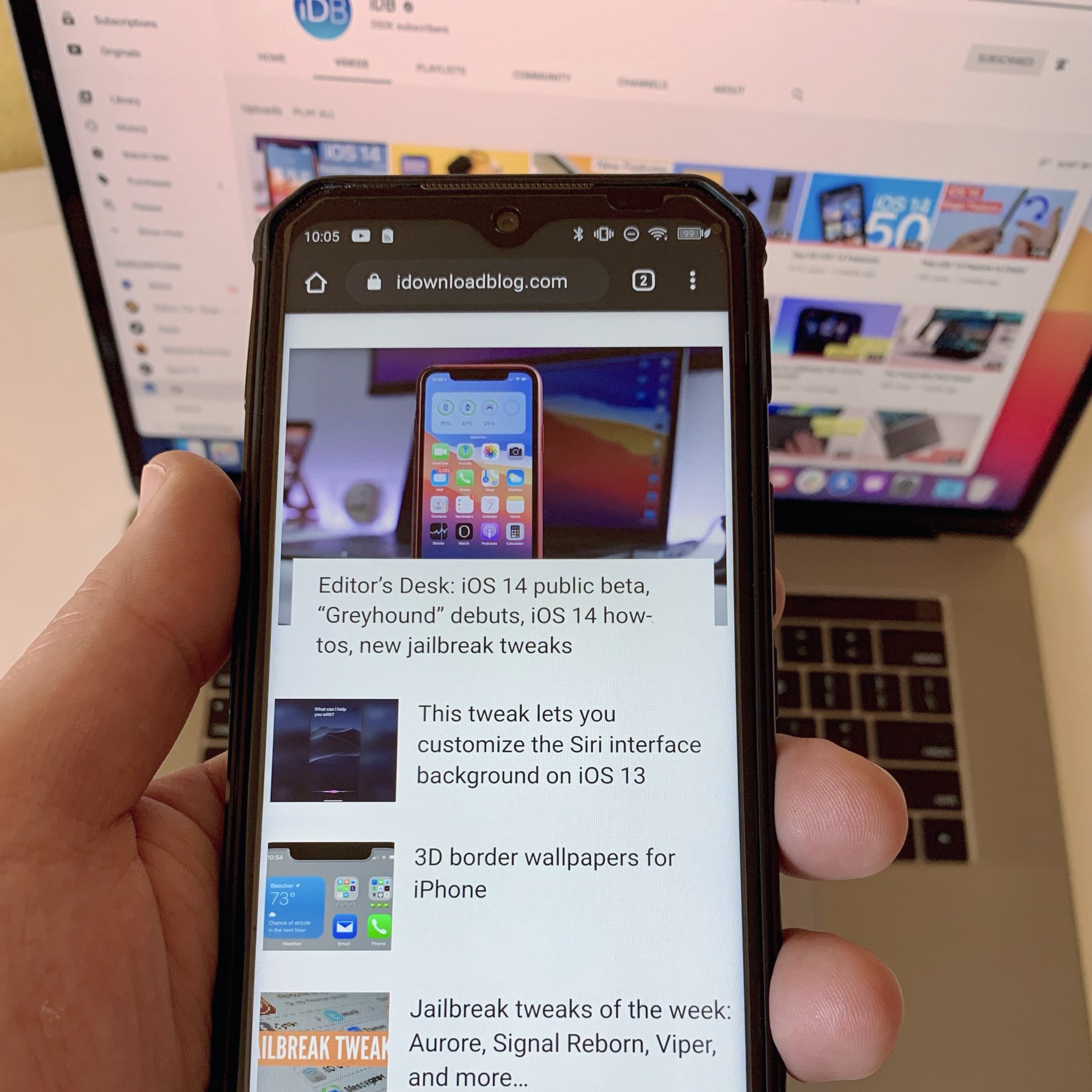
Doogee, a prolific maker of shockproof smartphones, kindly sent me their S95 Pro rugged smartphone with some useful add-ons for review. I’ve been using this device alongside my iPhone XS Max on an everyday basis for almost two months now. From my vantage point of an iPhone user for more than a decade, I can honestly say that I came away pretty impressed.
Introducing rugged Android maker Doogee
Even Android people may be unfamiliar with Doogee, which is a prolific Hong Kong technology company set up in Spain in March 2013 that specializes in ruggedized devices that aren’t as mainstream as the sexy, thin and fragile headsets from Apple, Samsung, Huawei and others.
The S95 Pro is Doogee’s excellent rugged phone with modular design that allows the user to extend its capabilities. Interested, the device began life on Kickstarter. It comes preloaded with stock version of Android 9.0 Pie giving you pure experience without any manufacturer skins.
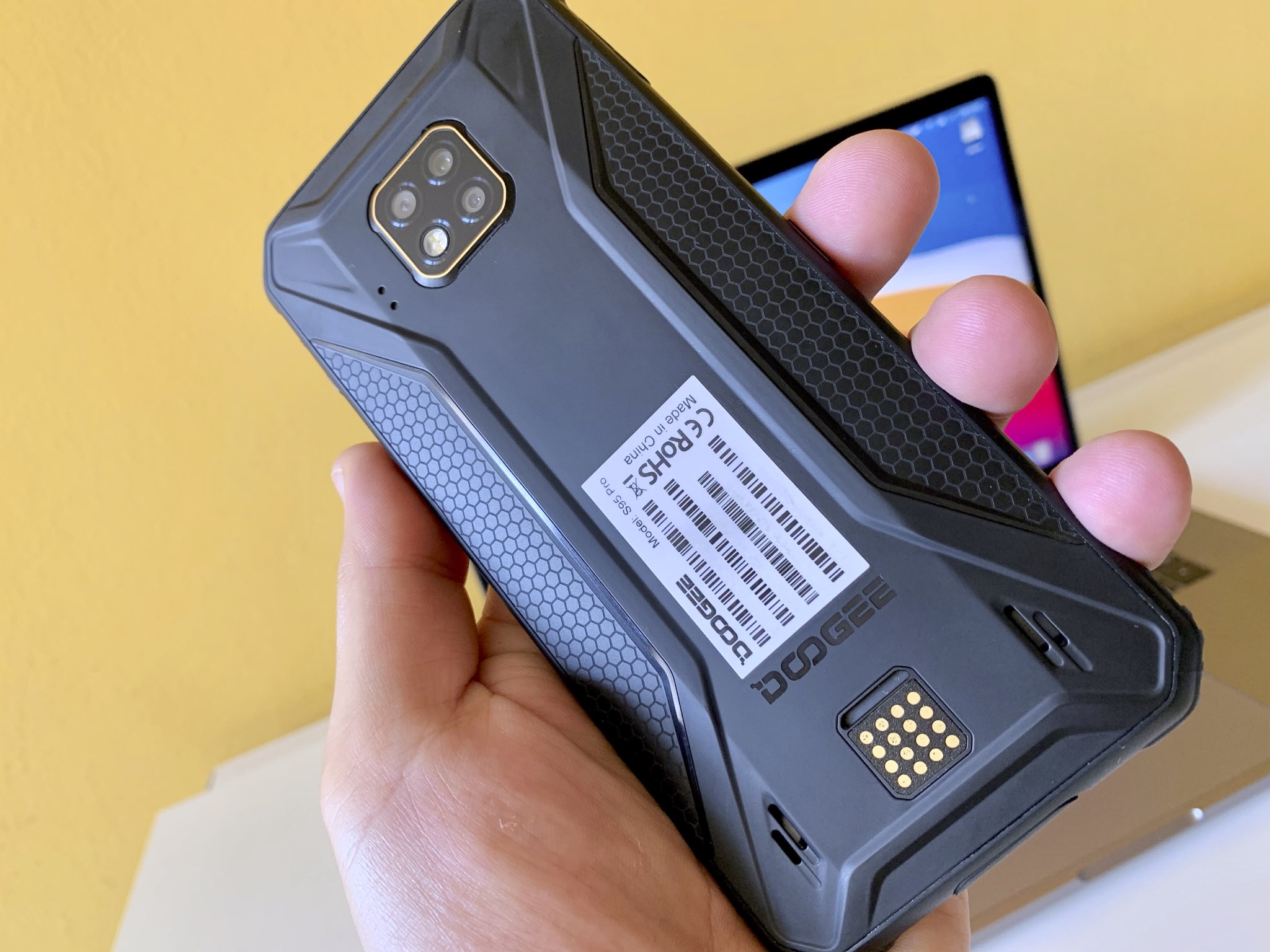
This phone is sturdy with excellent build quality
When I say that the S95 Pro is modular, I don’t mean it has anything to do with Project Ara, Google’s ill-fated modular smartphone project that went nowhere. My S95 Pro arrived with add-ons that can be easily snapped on its back. You get two add-ones that attach with a reassuring magnetic click via a Pogo connector, which is a 4×4 metal pin array on the phone’s back. Unlike the phone itself, the add-ones are not waterproof or shock resistant.
Premium packaging
The S95 Pro arrives in a sizable, impressive packaging. It’s a bit on the luxurious side that you’d normally expect from Samsung’s special-edition Galaxies. The black stylish box opens to reveal the phone itself and two attachments: a battery package and a speaker module.
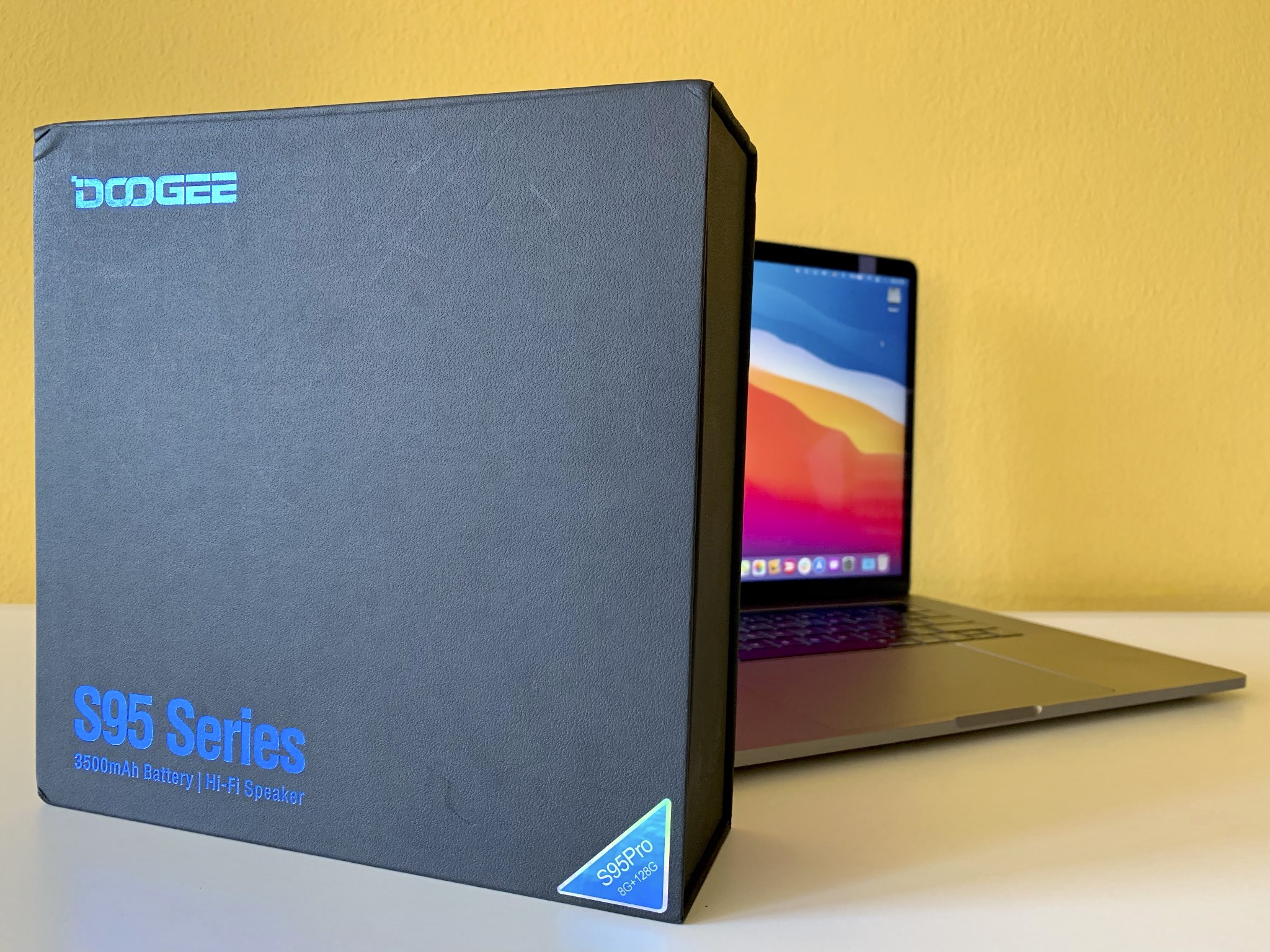
Well, packaging is exquisite and certainly feels premium
The phone comes with a screen protector pre-installed for added protection, with an additional screen protector arriving in the box in case of an accident, which is a thoughtful gesture indeed. Next, you’ll find a USB-C charge and data cable, plus a 24-watt charger compliant with the USB-C Power Delivery protocol, meaning you can fast-charge the phone with it.
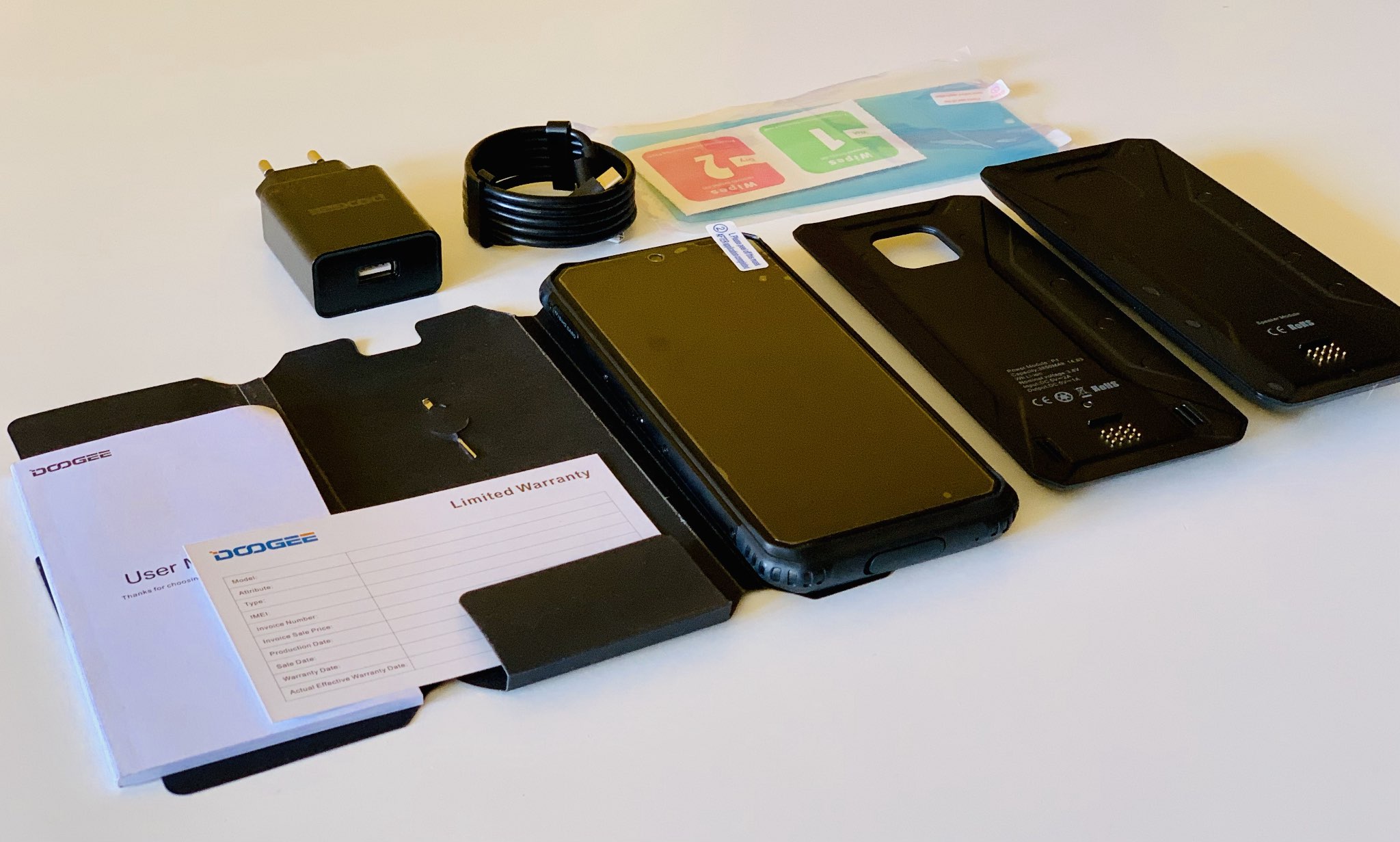
The S95 Pro ships with a spare screen protector in the box
Lastly, the box also packs in a product manual, a warranty card and a pair of wipes. Notice something missing? Yeah, no wireless or wired earphones arrive with this phone. This may disappoint some people, but that seems to be the direction the industry is taking based on rumors that the next iPhone will arrive without a charger and headphones in the box and Samsung reportedly not including chargers with some of its phones next year.
Sharp industrial design
You know me, I’ve always praised Apple’s sleek and smooth phone designs, but that doesn’t mean I won’t admit other people are putting out some solid smartphone designs as well.
When you hold it in your hand, this rugged smartphone feels like something straight out of a Mad Max movie with its octagonal (eight-sided) corners, a large screen and its metal frame covered with a rugged rubber sheet. It feels great to hold in one’s hand and looks absolutely sharp from every angle. Though not as thin as my iPhone, that was to be expected for all ruggedized smartphones are bulkier than you regular smartphone and a bit on the heavy side.
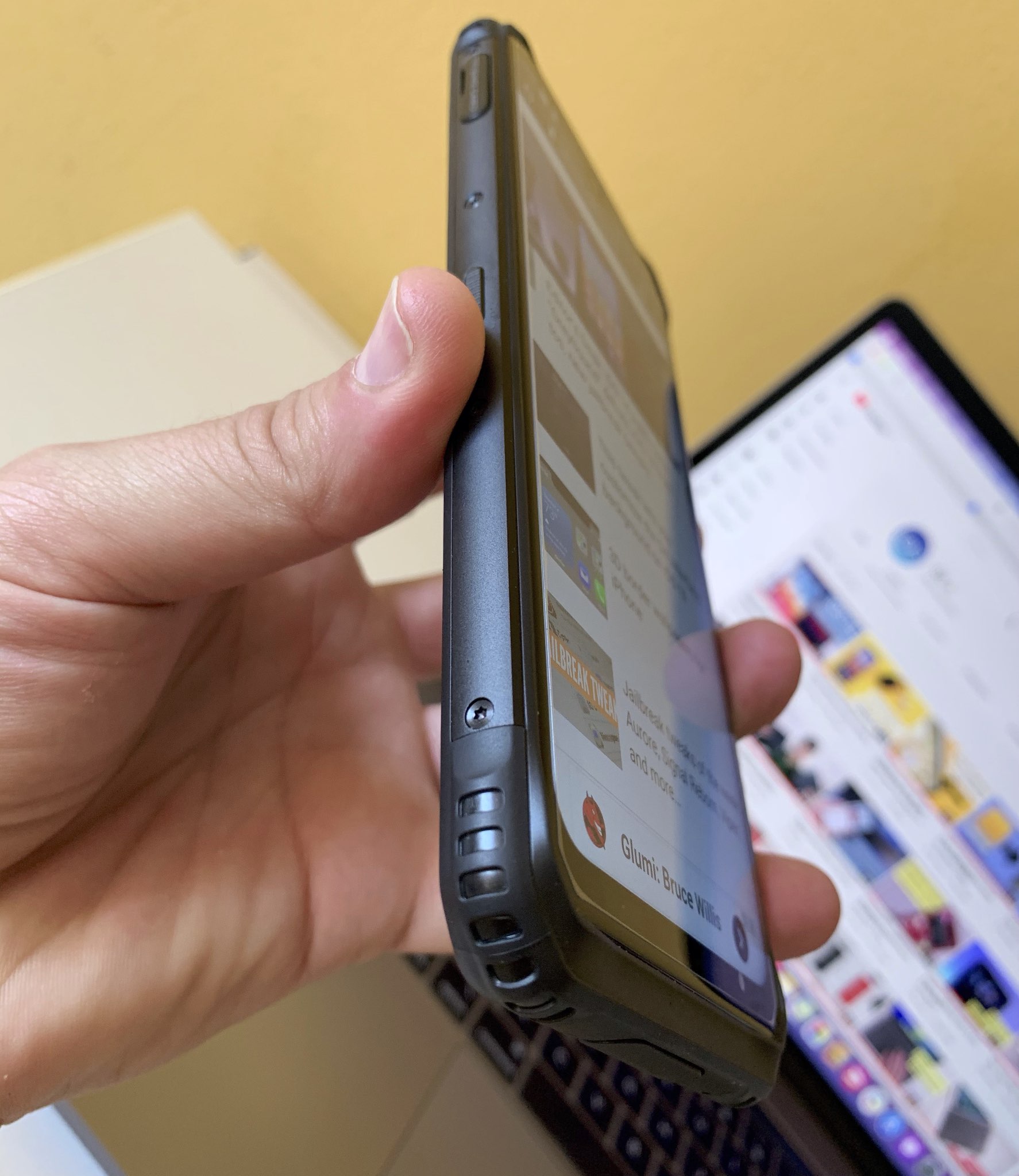
The rugged rubber edges on the Doogee S95 Pro
The phone itself measures 77 mm wide, 167 mm tall and 16 mm deep. It weighs 284 grams without any accessories attached. By comparison, my iPhone XS Max is as wide as the S95 Pro, about 10 mm shorter and, you guessed right, significantly thinner at just 7.7 mm deep. At 208 grams, my 6.5-inch iPhone XS Max naturally feels a bit lighter to hold than the Doogee.
Now, I’ve tested and held ruggedized phones in my hands before and I can honestly say that although the S95 Pro feels significant, it manages to do so without being too thick. Needless to say, that changes when you attach one of the add-ons, but I’ll come back to that later.
Ruggedness is the name of the game
The aluminum alloy chassis and the thickened rubber running around the edges of the phone provide utmost protection against drops and scratches. To test this. I’ve dropped the phone a few times from higher-than-head height and the rubber not only helped it sustain the impact but also prevented the device from landing straight on its display. I’ve also used the phone in heavy rain for at least half an hour on several occasions and it came out just fine.
The S95 Pro is water and dust-proof with the power port and the two SIM slots (one on each side of the frame) covered with click-in ports. So far so good, my iPhone is IP68-rated, too.

One screen protector is preinstalled on the phone and a spare one is in the box
However, the S95 Pro is also compliant with the IP69K rating, which is the highest protection available against ingress of dust and high temperature or water. It also means the phone can survive submerged three meters deep for four hours. This makes the S95 Pro suitable for environments that require heavy washdown or where equipment must be carefully sanitized.
By comparison, no iPhones to date have had IP69K rating. And if that wasn’t enough for you, the S95 Pro is a MIL-STD810G device, which is a US Military Standard that guarantees a level of durability and combat-readiness for a piece of equipment. It means the phone was subjected to a series of 29 tests, including shock tests and vibration tests.
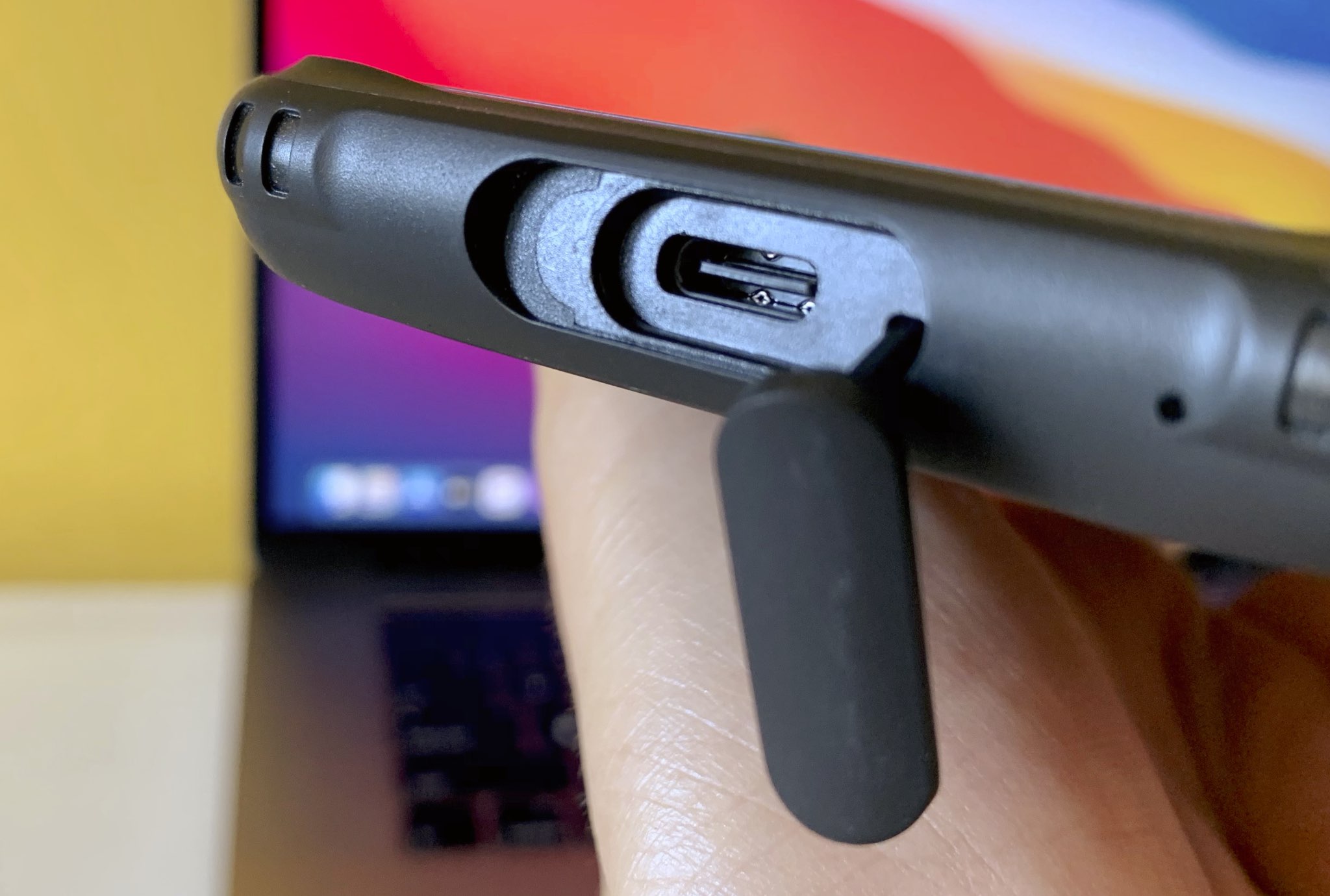
The USB-C port for data and power is protected with a rubber cover
Whether you’re a construction worker, a fitness buff or someone who likes to spend a lot of time hiking and climbing outdoors, MIL-STD810G certification gives you a peace of mind knowing you can use the phone in challenging environments without a hearty protective case.
This phone has several buttons lined up alongside the edges. On the left side, you’ll find a programmable button which I set it as follows: single click enables flashlight, long-press invokes the app switcher and double click takes a screenshot (you could assign other system features or even apps such as Google Assistant to each of these button actions).
The opposite edge is home to a volume rocker, a power button and a fingerprint reader positioned right below the power button (Apple was rumored to have explored an iPhone power button with an integrated Touch ID). I’ve found the side placement of the fingerprint sensor to be natural and have had no issues at all reaching the reader and unlocking the phone.

A fingerprint reader is on the right edge below the power button
The USB-C port for power and data is located at the phone’s bottom and is covered with a rubber flap. There’s no headphone jack on the S95 Pro, but hey — I’m used to that!
The screen is LCD, not OLED
The front of the S95 Pro is dominated by a 6.3-inch Full HD+ screen protected by two layers if Corning Gorilla Glass 5. You can switch between various picture modes or calibrate the screen to your needs via a MiraVision tuning. Unfortunately, the display is a fingerprint magnet because it lacks oleophobic coating that my iPhone and many other smartphones have.
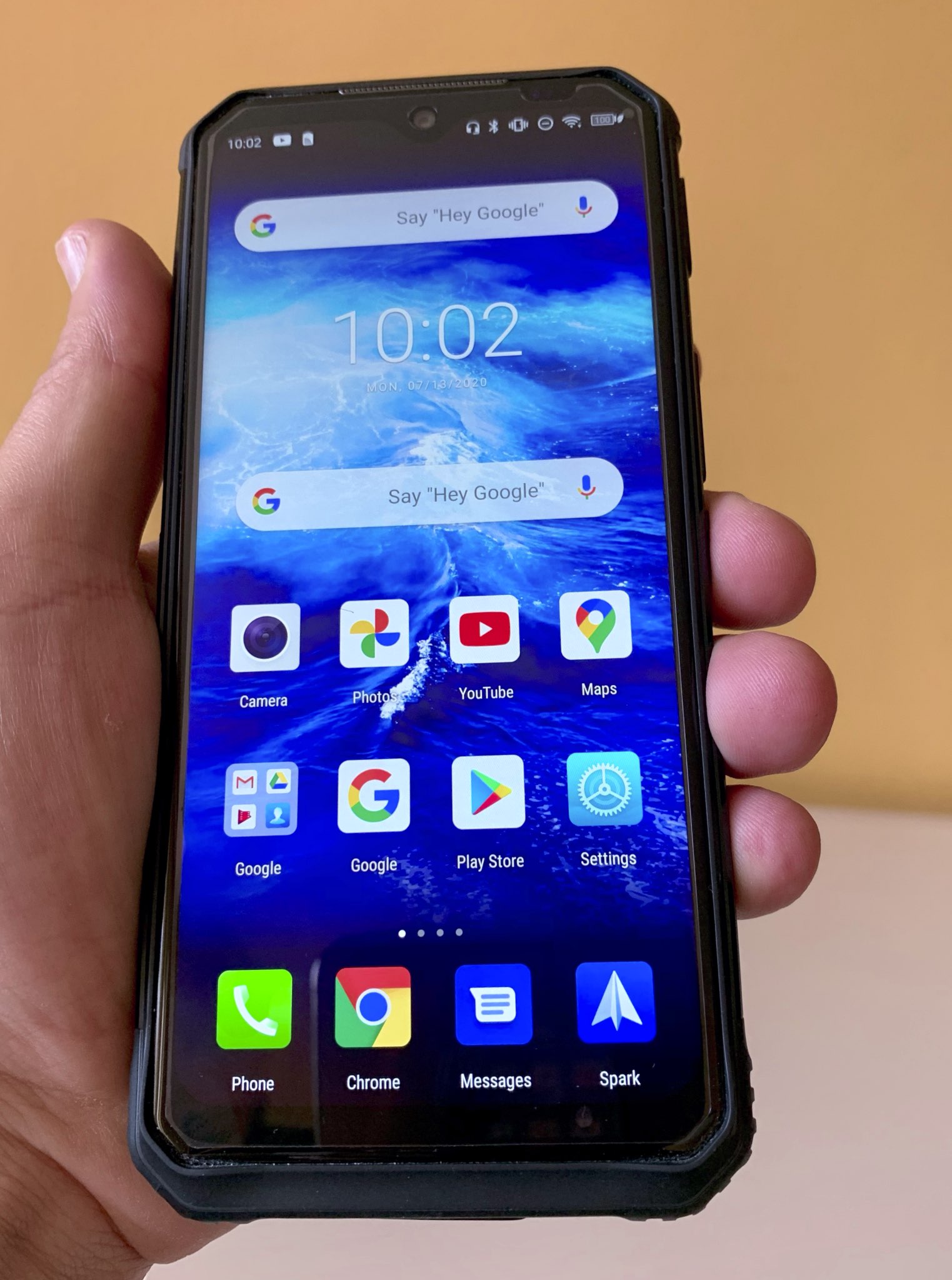
The S95 Pro runs Android 9 Pie
The capacitive multitouch display is scratch-resistant and comes with a pre-installed screen protector. It’s got a 1,080-by-2,160 pixel reposition, giving it an iPhone XS Max-like sharpness of 403 pixels per inch. Android phones typically have higher-resolutions OLED displays, but this Doogee carries a good ol’ IPS LCD screen. My iPhone XS Max is based on OLED and I can see the difference in image quality – the S95 Pro lacks deep blacks of my iPhone. Besides, colors are not as vivid and can appear a bit washed-out compared with my iPhone side by side.
Speedy internals
The S95 Pro is a global 4G LTE smartphone that works with all major GSM cellular providers and supports the following cellular radio standards:
- GSM: B2/3/5/8
- WCDMA: B1/2/4/5/8/6
- TD-SCDMA: B34/39
- FDD: B1/2/3/4/5/7/8/12/13/17/18/20/25/26/28A/28B/66
Wi-Fi support goes up to dual-band 802.11ac. Geopositioning is supported with a little help from the GPS, A-GPS, GLONASS and BeiDou satellites. Like my iPhone, the S95 Pro integrates NFC for contactless payments via Google Pay. Unlike Apple Pay’s exclusive use of NFC, third-party apps on Android are allowed to take advantage of NFC for their own purposes.
Following its predecessor, the S90, the S95 Pro runs MediaTek’s Helio P90 chip that incorporates inference accelerator for machine learning tasks, depth engine for portraiture photography and AI features for computational photography. There are two high-speed ARM Cortex-A75 CPU cores and six power-efficient Cortex-A55 ones in a single octa-core cluster.
The GPU is Imagination Technologies’ PowerVR GM 9446, which makes the phone a pretty capable portable gaming machine (until recently, Apple had been using PowerVR GPUs in iPhones before switching to its own custom GPU designs about two years ago).
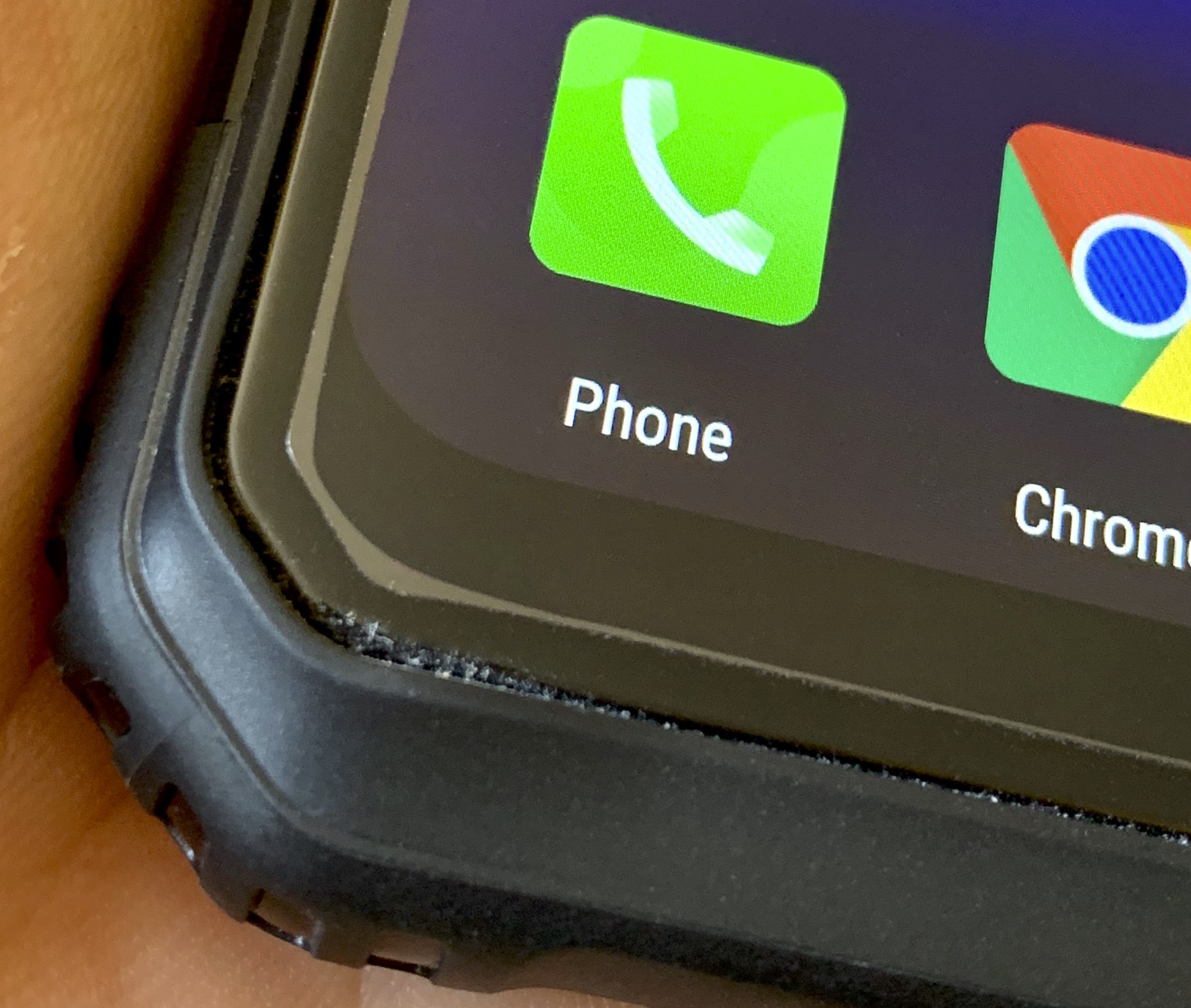
You won’t find any vendor bloatware on this phone
The Helio chip is paired with eight gigabytes of two-channel LPDDR4x memory and 128 gigabytes of Samsung’s UFS 2.0 flash storage. While not as speedy as the UFS3.0 used in 2020 flagships, UFS2.0 storage does provide faster performance than eMMC storage.
The MediaTek chip in the Doogee is on par with Qualcomm’s mid-range Snapdragon 710, but lags begging the Snapdragon 845. While no chip can touch Apple’s own iPhone and iPad processors — and this has been true for years now — the S95 Pro is certainly no slouch.
Now, I won’t bore you with Geekbench scores — specialized Android sites are better at testing this than I am, but suffice it to say that I’ve never had a feeling the S95 Pro wasn’t up to snuff in terms of multitasking, launching apps or running resource-intensive games such as Fortnite or Asphalt. In fact, the S95 Pro zipped through those tasks with ease, And if it means anything, my Android-toting friends who have seen the S95 Pro in action tell me this is one of the fastest, if not the fastest non-Qualcomm smartphone out there.
The cameras: wide-angle lens issues
You get a capable front camera maxing out at sixteen megapixels (four megapixels more than the iPhone 11 selfie cam), making those selfies look sharp. The back is loaded with a triple-camera system and LED flash. The rear cameras include Sony’s f/1.8 48-megapixel IMX586 sensor (it’s their first 0.8 µm generation imager, also found in Samsung’s Galaxy S20 Ultra).
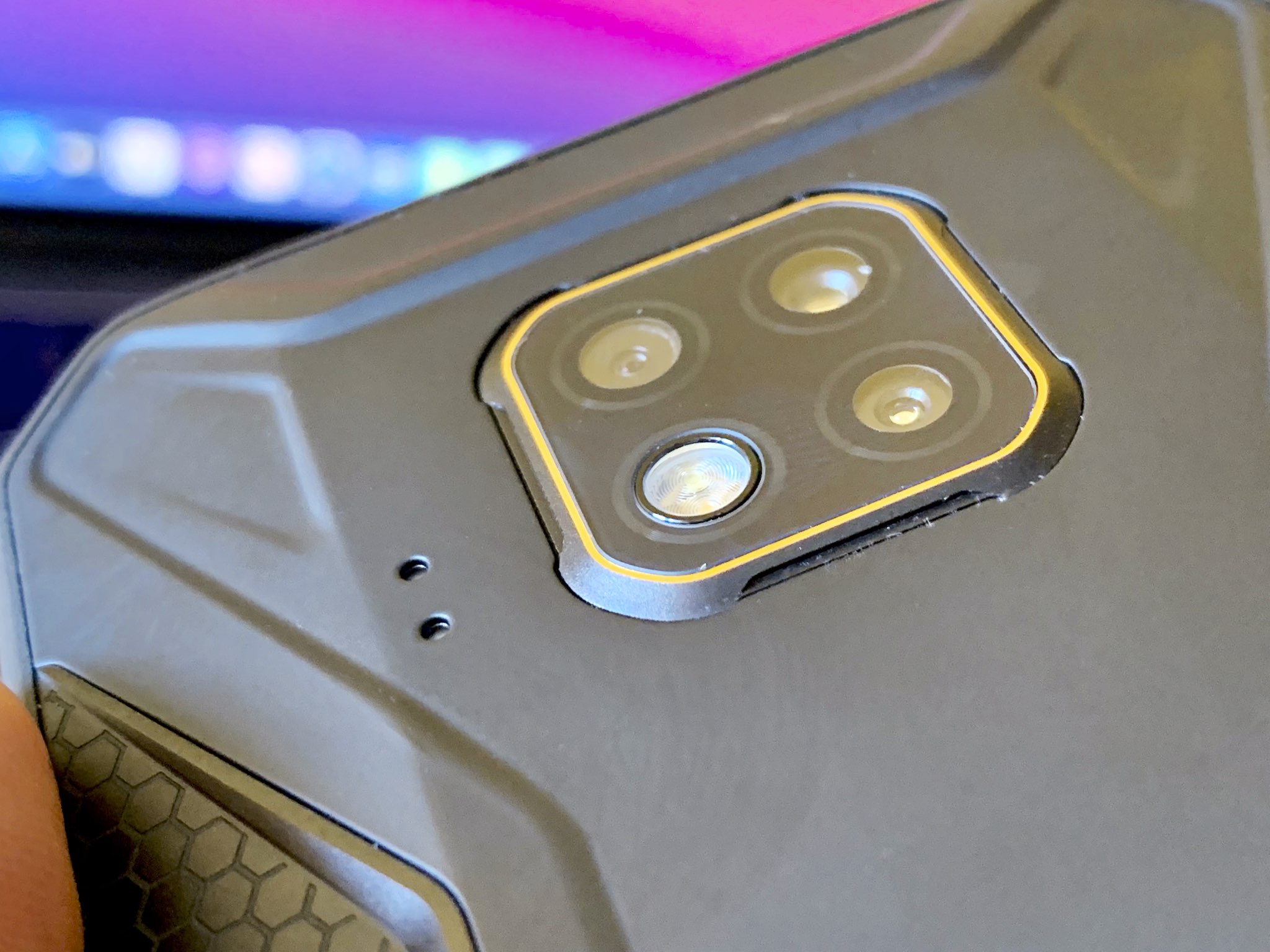
The rectangular camera module is centered
The 48-megapixel shooter produces 8,000-by-6,000 images and is flanked by two other eight-megapixel sensors, one is telephoto and the other is ultra wide with a field of view 117 degrees vs. 120 degrees on the iPhone 11 Pro. Video recording supports up to 4K resolution capture with decent but not stellar results. In terms of imaging, I’ve found the main and telephoto cameras to produce nice-looking images, especially the main 48-megapixel lens.
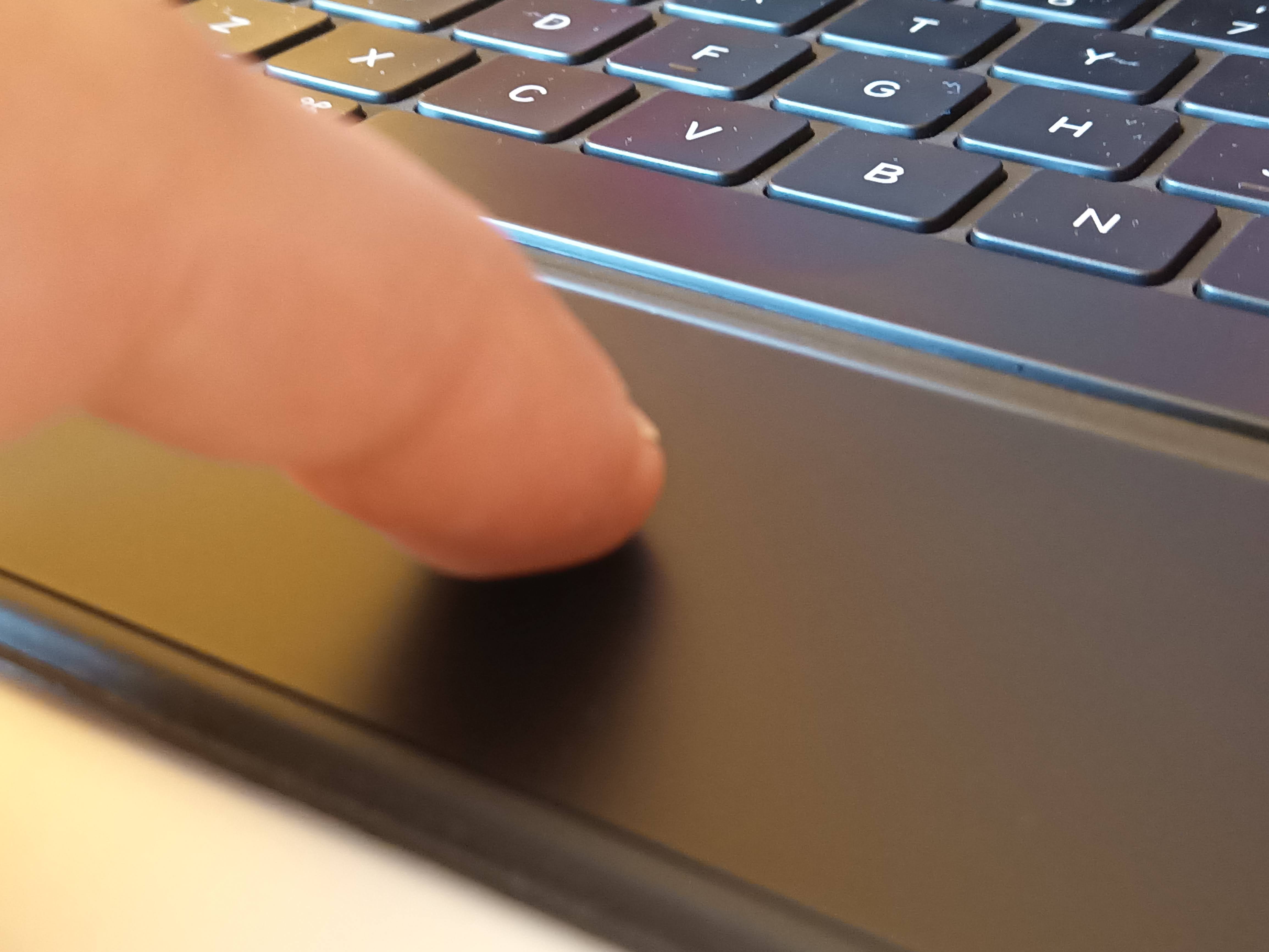
Like on iPhone, telephoto lens gives you 2x optical zoom or 10x digital zoom
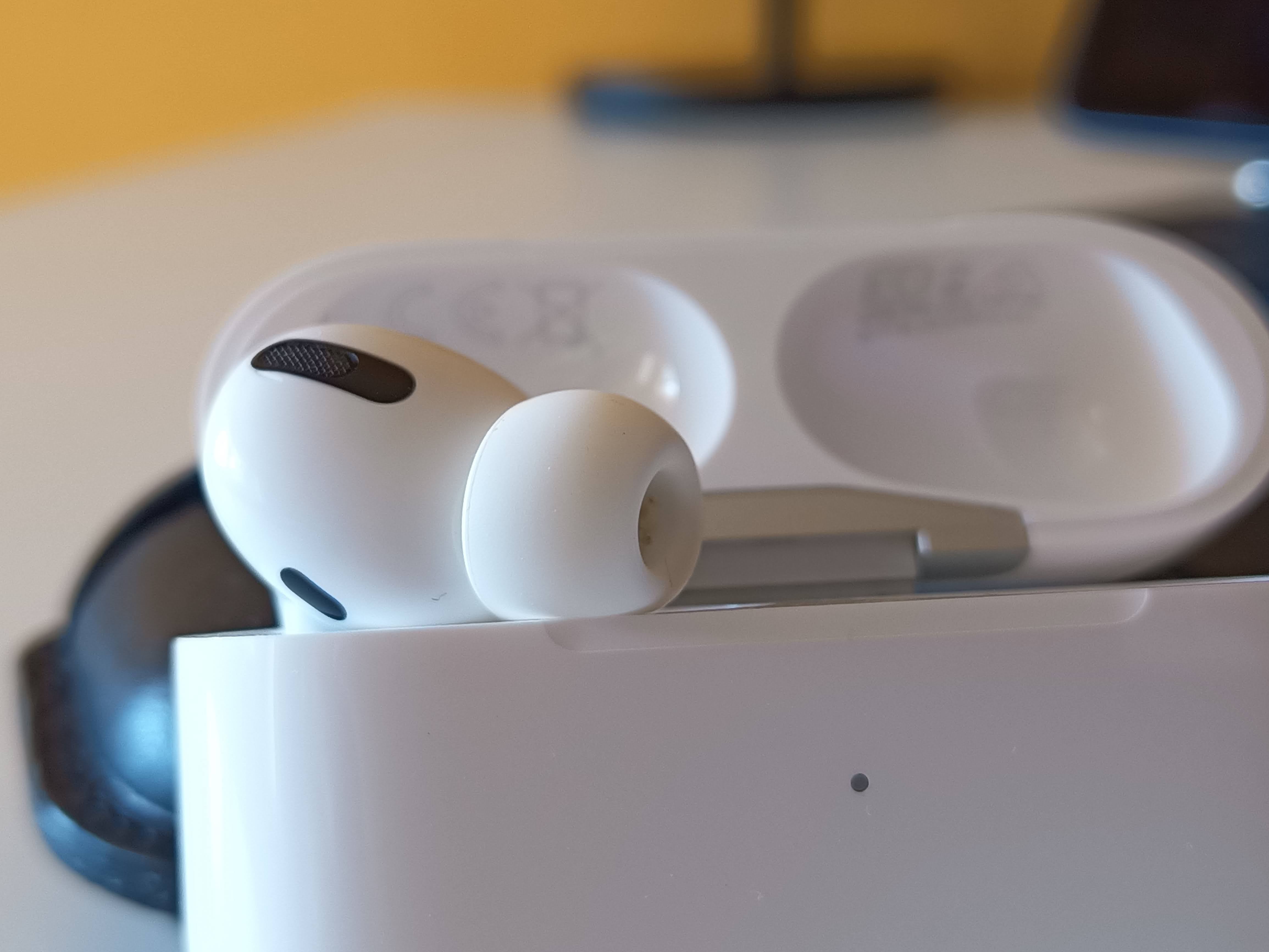
The telephoto camera produces very nice macro shots like this AirPods closeup
Which brings me to my biggest gripe with this phone: the wide-angle lens is pretty terrible. As soon as I snapped up a few photos with the wide-angle camera, I could immediately see artifacts like blurring on the edges, as well as very pronounced spherical distortion and chromatic aberration. There are no two ways about the fact that the wide-angle lens is clearly not that impressive on this phone, as evidenced by my example shots below.

Notice the heavy blurring on the edges — once you notice it, you cannot unsee it

Spherical distortion on the ultra-wide lens is ridiculous

Another look at the distortions produced by the ultra wide lens
While the S95 Pro certainly has solid photographic credentials, you may find that your triple-lens iPhone 11 shooter takes prettier images, especially if you care about that wide-angle lens.
Charging and the battery add-on
Doogee’s 6.3-inch phone is fueled by a massive 5,300 mAh battery versus the surprisingly capacious 3,174 mAh battery in my 6.5-inch iPhone XS Max. I’m happy with my iPhone battery life as it is, but there’s now denying that the lasts way longer with similar usage patterns — for example, I could typically get away with two full days between charges, even with lots of social interactions, web surfing, checking email frequent messaging and regular gaming.
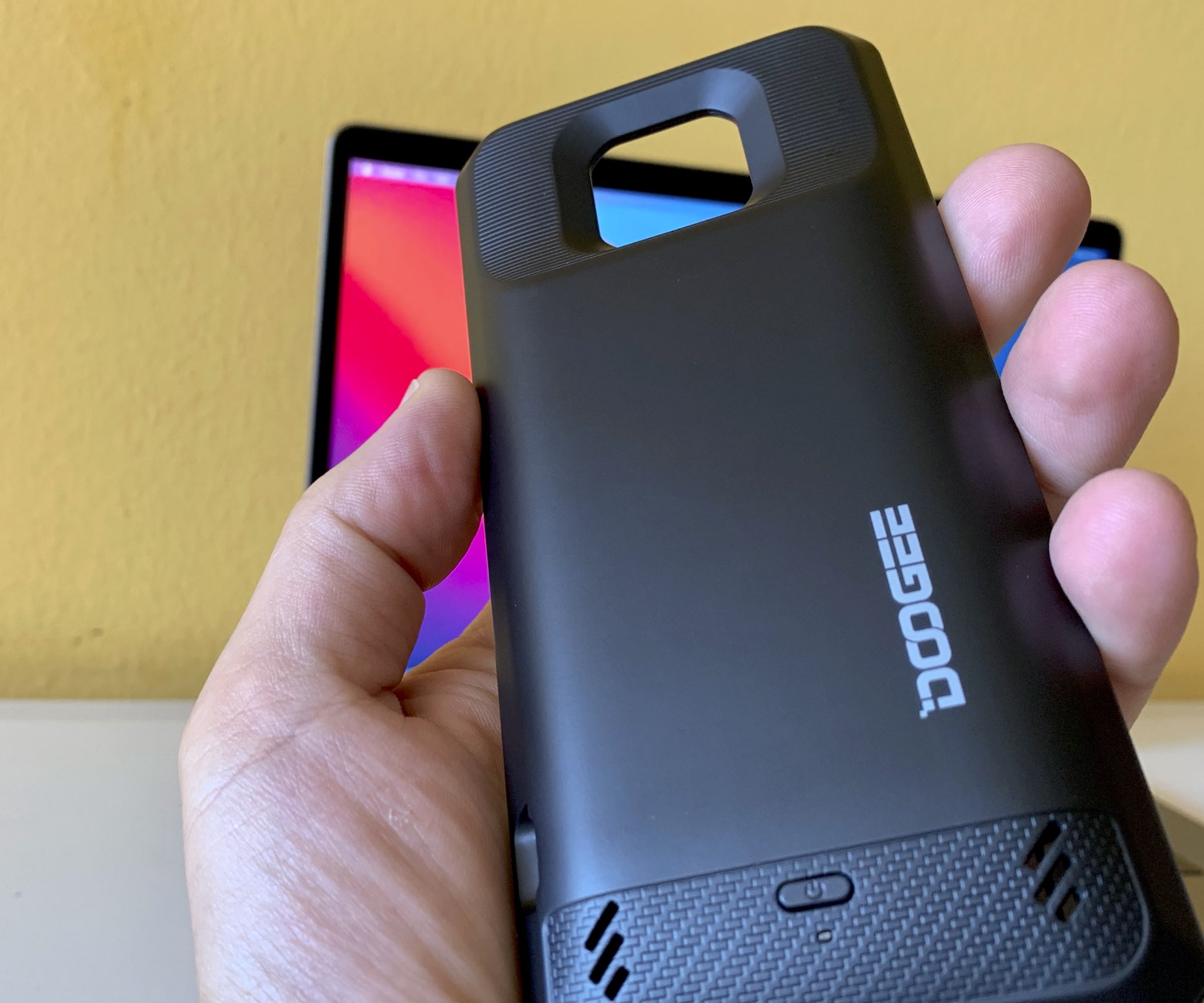
Meet Doogee’s 3,500 mAh battery pack for the S95 Pro
Need even longer run time? Just snap on the included 3,500 mAh battery attachment to the back and you have a whopping 8,800 mAh phone, just like that. Such long-lasting endurance may be an overkill for many people, but I was thankful for it. With the battery add-on included, my S95 Pro went from 284 grams to 390 grams: the battery module does make it significantly heavier and bulkier, but the same is true for pretty much all smartphone battery cases.
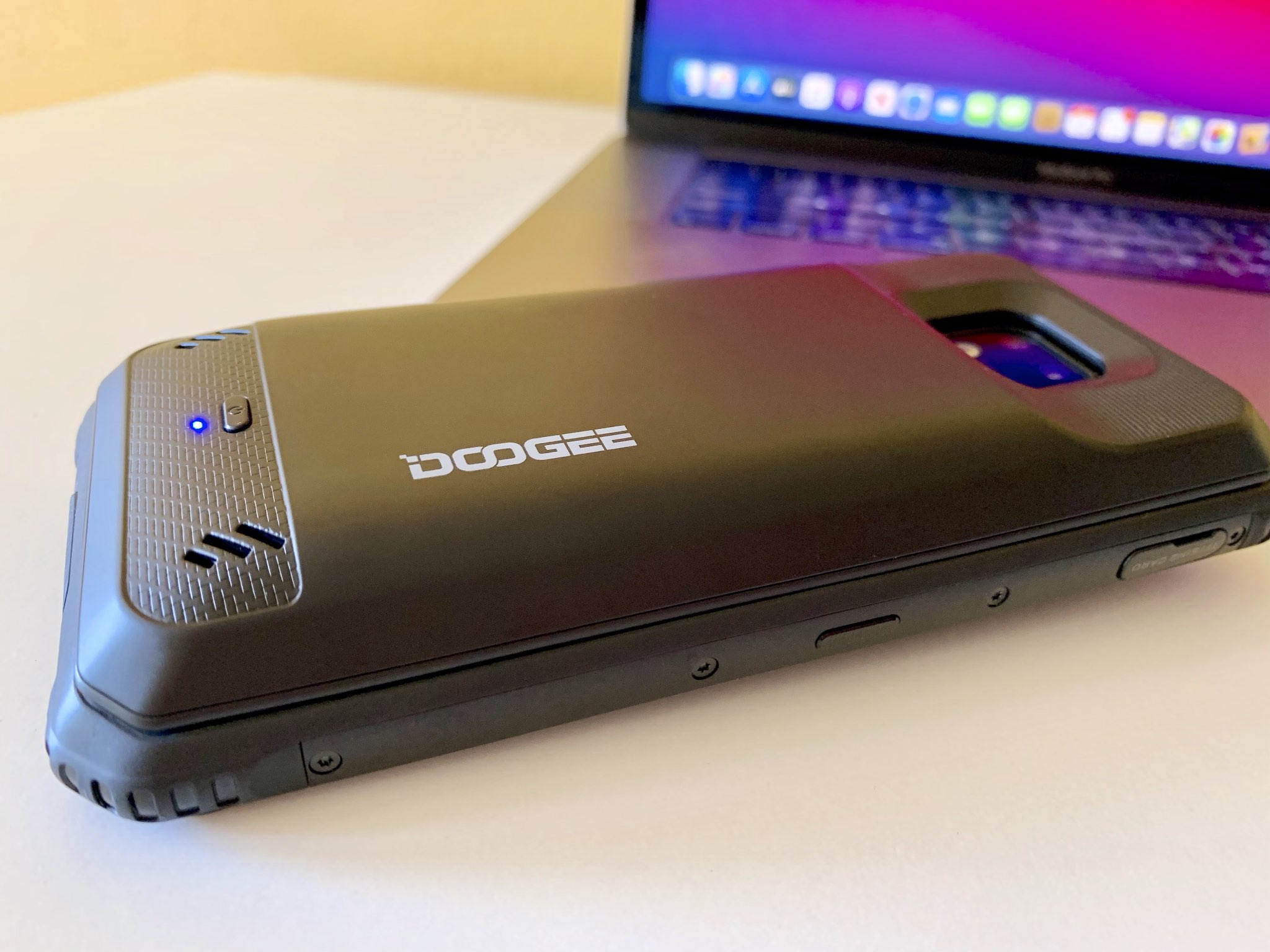
The S95 Pro with the battery add-on snapped onto its back
You just can’t find a modern smartphone with a user-replaceable battery nowadays and sealed batteries have been the reality the iPhone owners have lived in since day one. Thanks to its modular design, the Doogee allows for increased battery capacity (at the expense of thinness and portability) for those who need it. The battery add-on charges independently via its own USB-C port and features dual color indicator light to signal its various states to the user.

The S95 Pro wirelessly juicing up itself via Mophie’s new Qi charger
The S95 Pro supports faster Qi wireless charging up to ten watts versus up to 7.5 watts on my iPhone. The USB-C charge port and the included 24-watt Type-C charger boost the phone’s battery from dead to fifty percent in about thirty minutes.
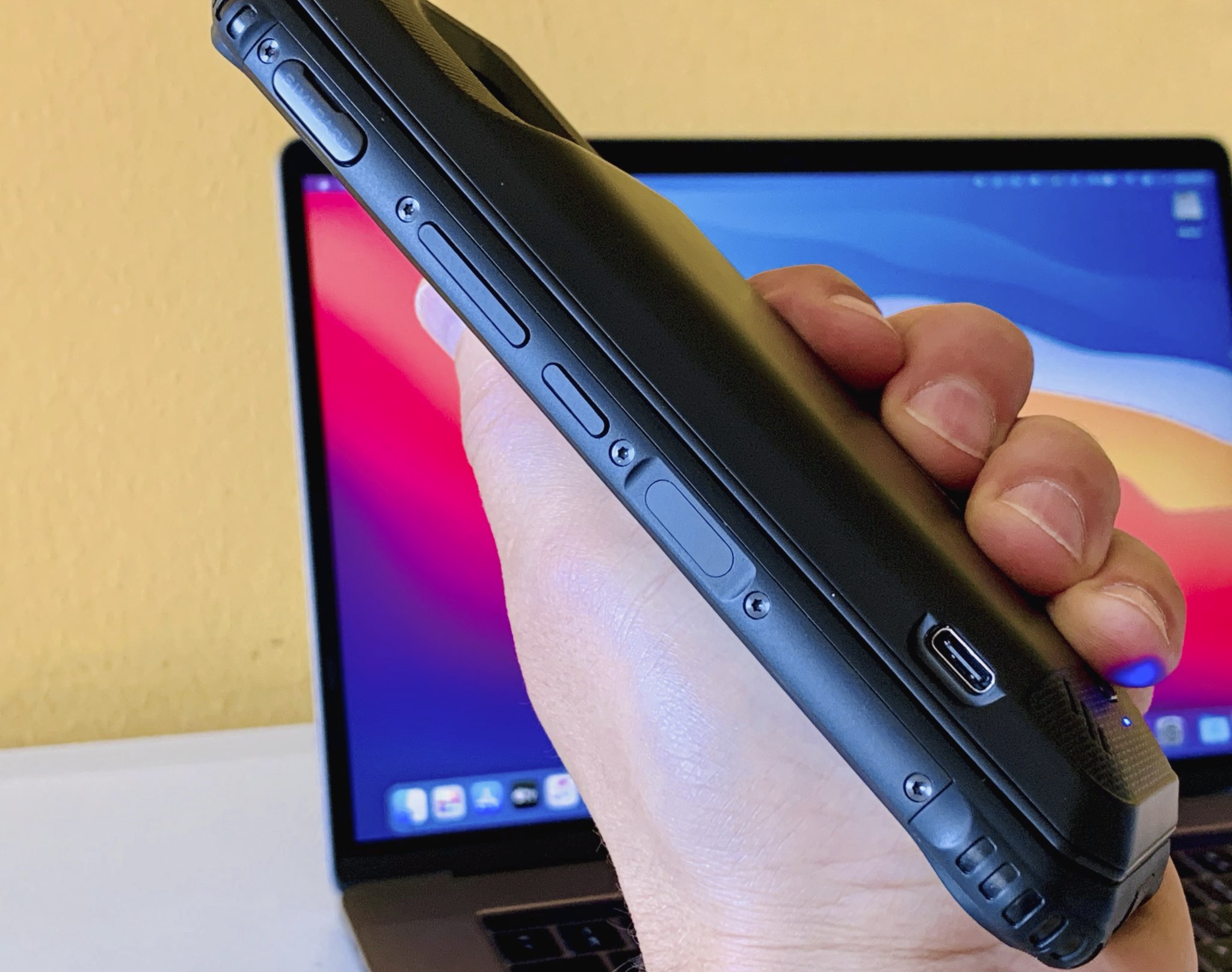
The battery pack charges via its own USB-C PD port
The speaker attachment
Suppose you’re out and about with friends and you want to listen to your favorite music no matter where you happen to be. Instead of carrying a boom-box on your shoulder like in the old days, attach that fat speaker module to the back of your Doogee and you’re good to go!
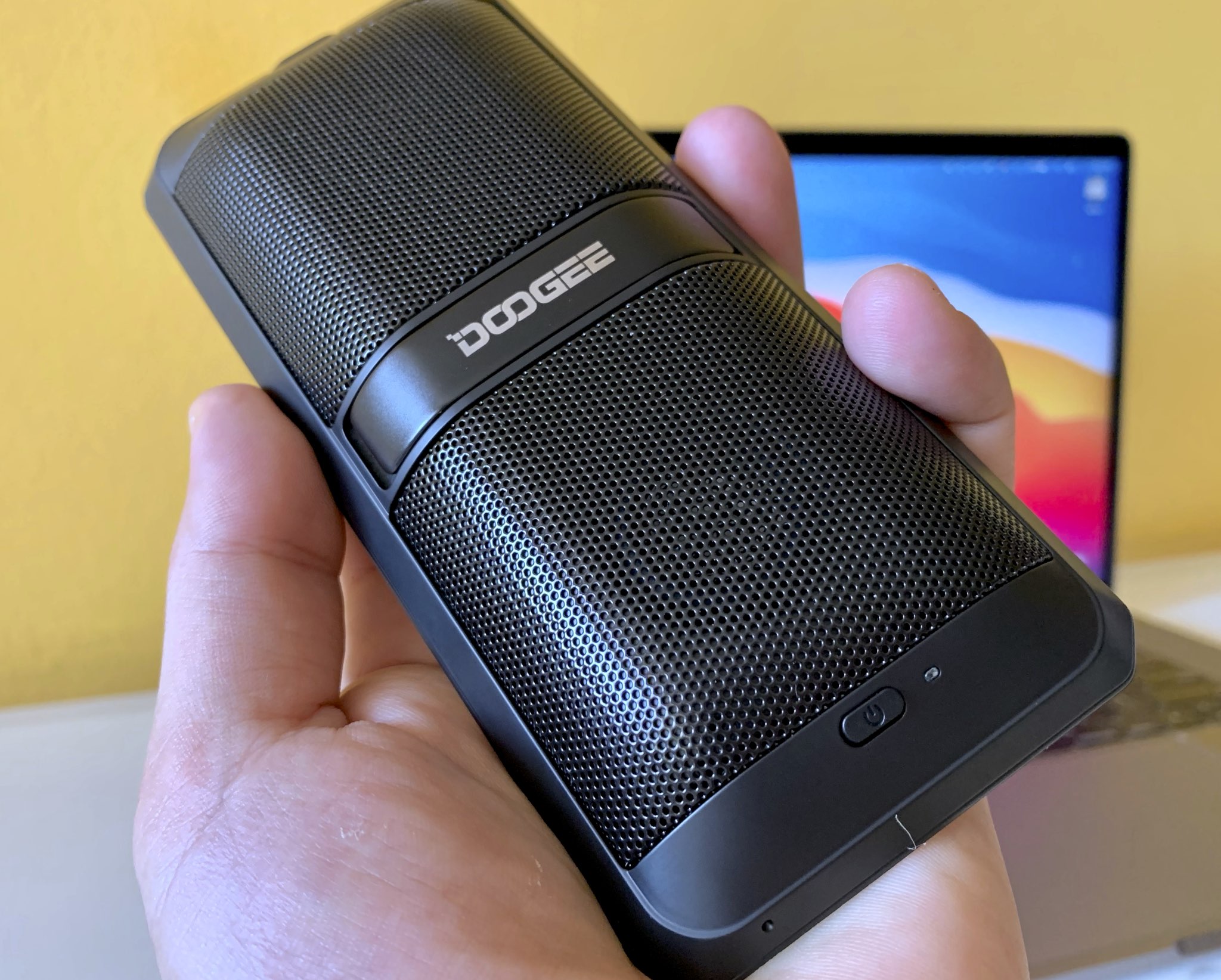
The S95 Pro also arrives with this speaker add-on in the box
It packs in a pair of 27mm speakers and an internal battery that allows for up to ten hours of music playback. A built-in USB-C port lets you top up the speaker attachment with fast-charge support. There’s also a handy kickstand in the speaker module to prop up the phone.
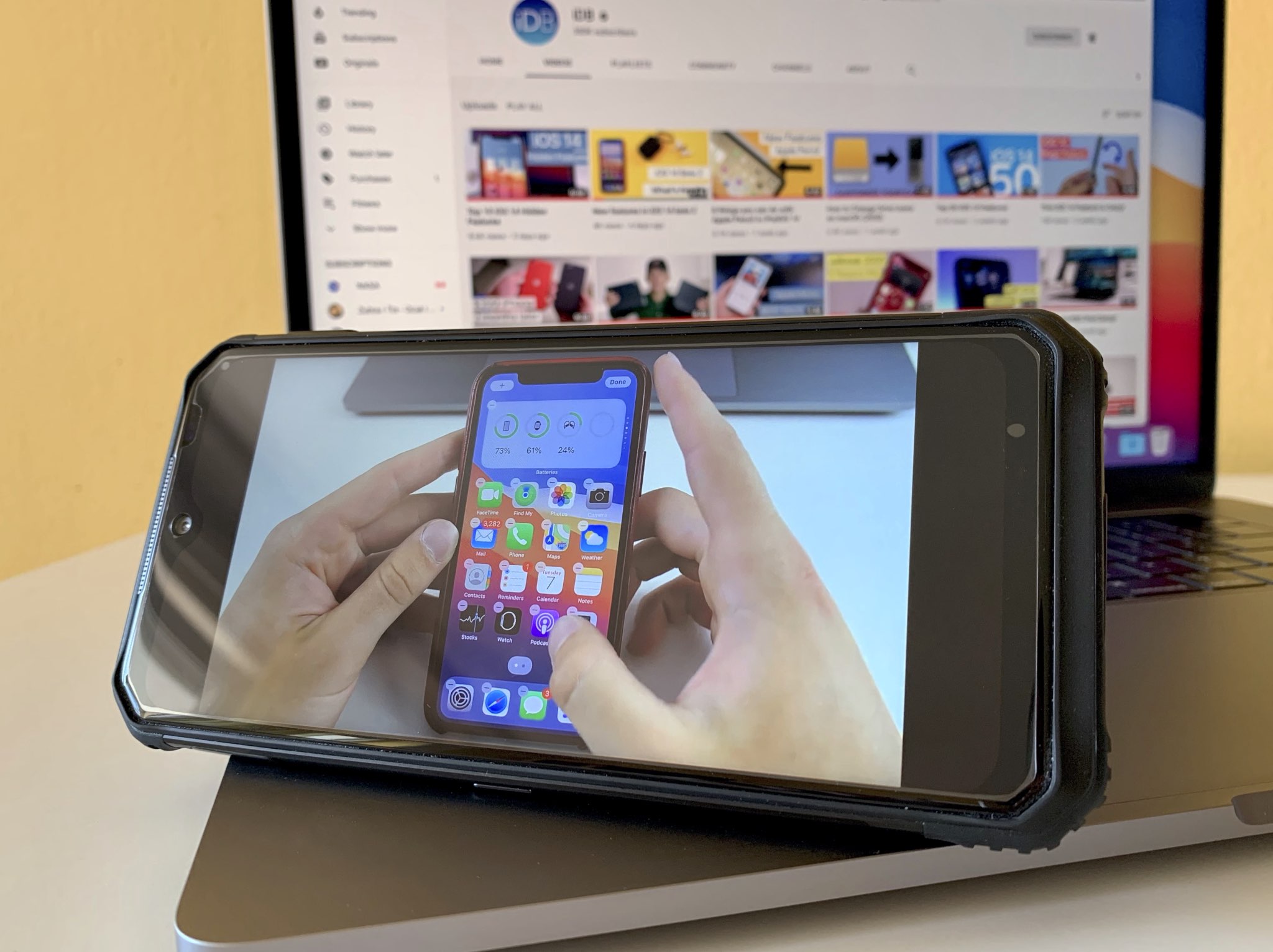
The kickstand on the back of the speaker props up the phone
That’s an awesome little perk when you need a proper viewing angle for watching video, making video calls and more. The 6W speaker produces pretty crisp highs and impressively deep lows. Overall, the speaker module pumps out audio which sounds significantly better than the vast majority of integrated smartphone speakers you’ve heard.
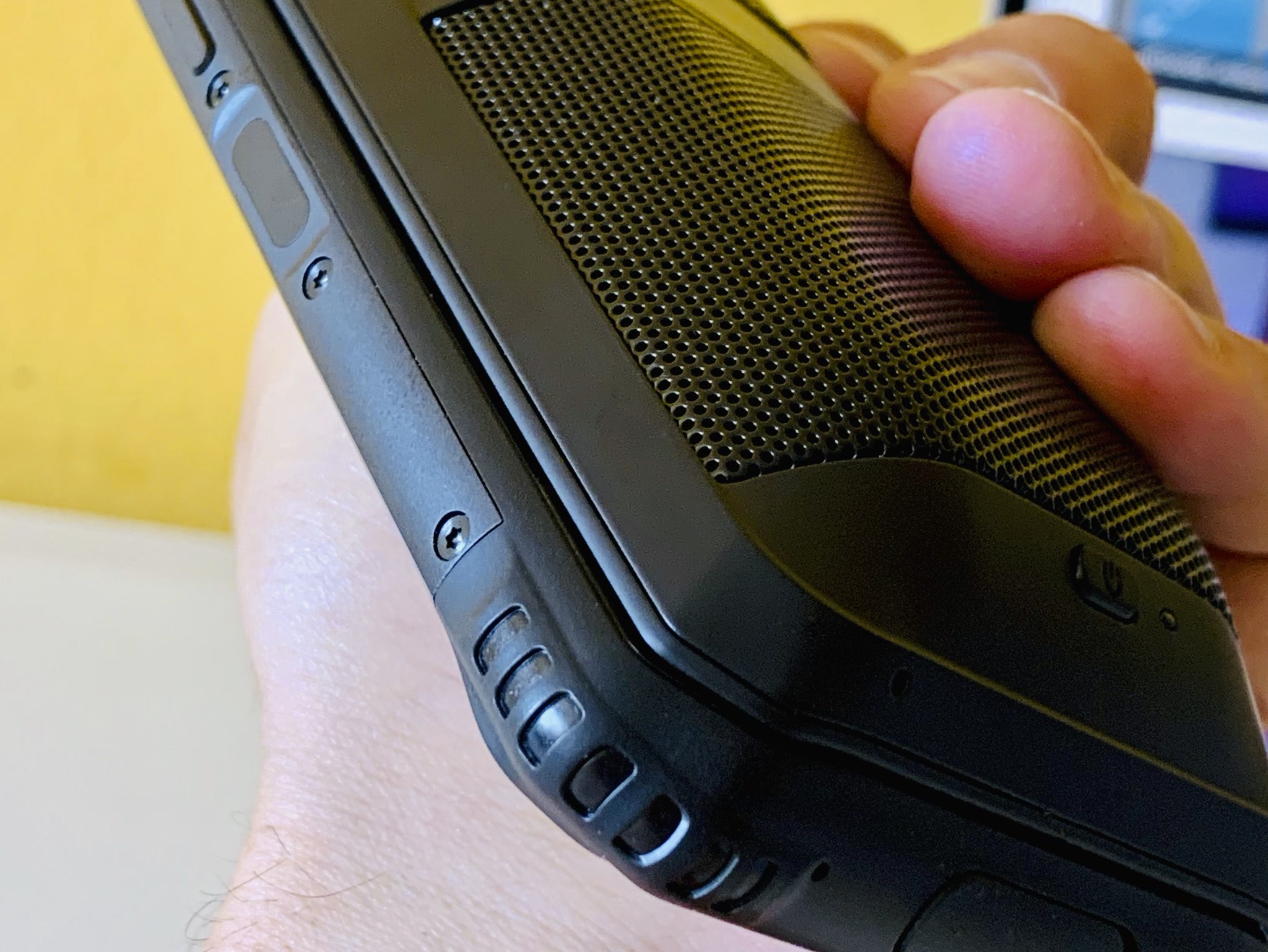
And just like that, your phone becomes a mini boom box!
The only downside to using the speaker add-on is the inability to use the rear camera while the add-on is snapped-on (unlike with the battery add-on that includes a cutout for the camera).
Two SIM trays
My iPhone XS Max is a dual-SIM device which makes it easy to use two different phone numbers: one is a physical nano-SIM card and the other is an eSIM module which is a tiny chip on the iPhone’s logic board (most other dual-SIM smartphones use this combination of a nano-SIM and an eSIM). This is especially useful when you’d like to activate a cellular plan from a carrier without having to swap your existing nano-SIM with a new one.
On the downside, not all wireless carriers offer eSIMs and there are edge cases where you might want to use two physical SIM cards at the same time — for instance, you may want to use two different carriers at the same time for your home and work numbers.
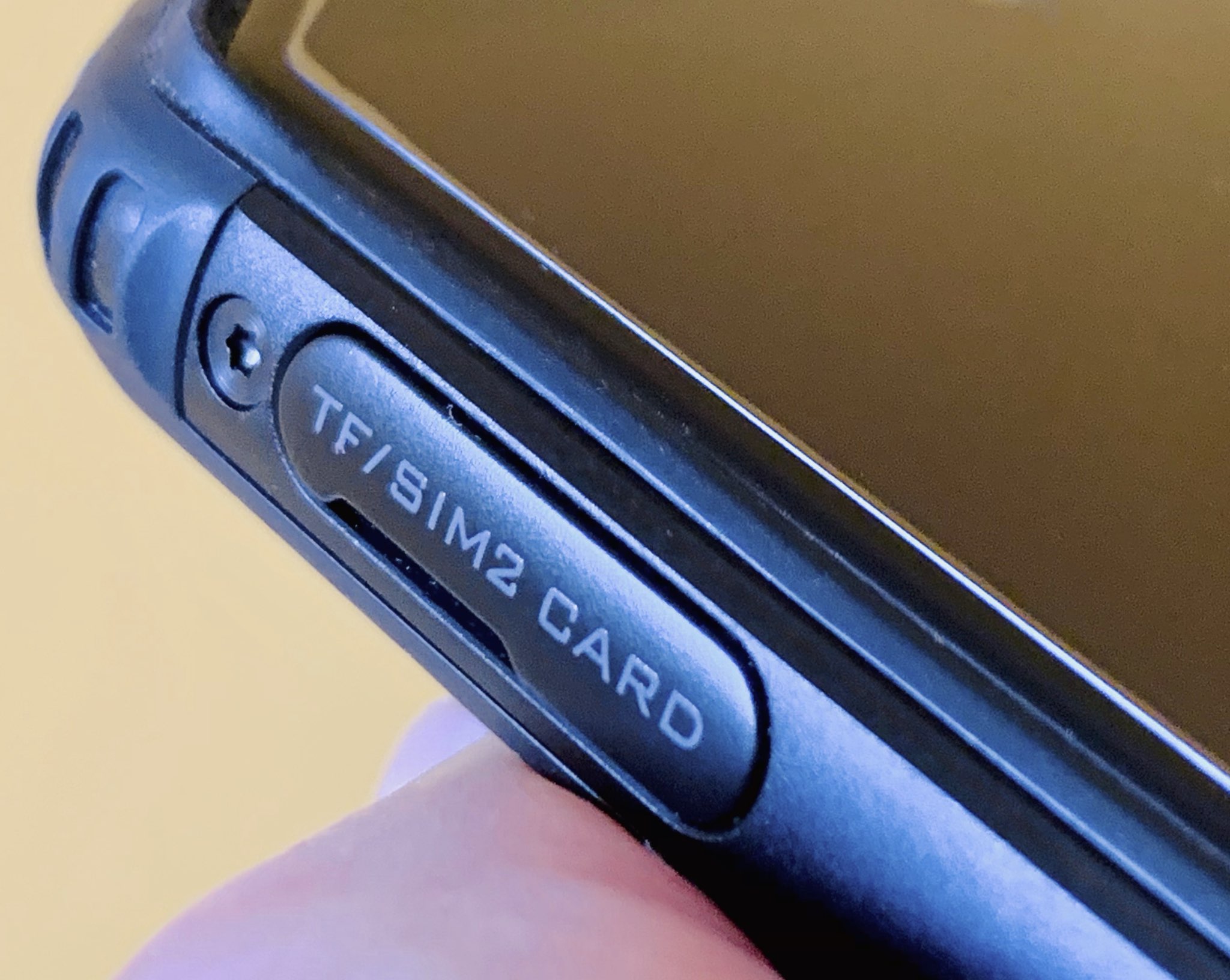
The other SIM tray doubles as an SD card memory expansion port
No such worries with the S95 Pro. You get two physical SIM trays on this phone and not only that, but the second SIM tray was designed to accept either a second nano-SIM card or a memory card for internal storage expansion (microSD, microSDHC and microSDXC).
That’s a thoughtful way to save valuable space in the device while at the same time providing the user with real choice when it comes to using two phone numbers simultaneously.
Android software support
The S95 Pro came with Android 9.0 pre-installed, which is kinda disappointing. If you can get over that, you’ll immediately appreciate that the phone is devoid of any vendor user interface skins which I’ve always absolutely loathed on other Android phones.
With the S995 Pro, you get stock Android experience, which is an undeniable plus for everyone who prefers simplicity and a user interface that doesn’t overwhelm. Like with Apple’s latest iOS 14 software, this phone has a sound-meter feature that measures decibel levels around you. You also get an app specifically designed for the phone’s barometer sensor.
Aside from fingerprint scanning, biometrics include facial unlock via a 2D camera which isn’t very reliable and doesn’t work in complete darkness like Apple’s TrueDepth camera does.
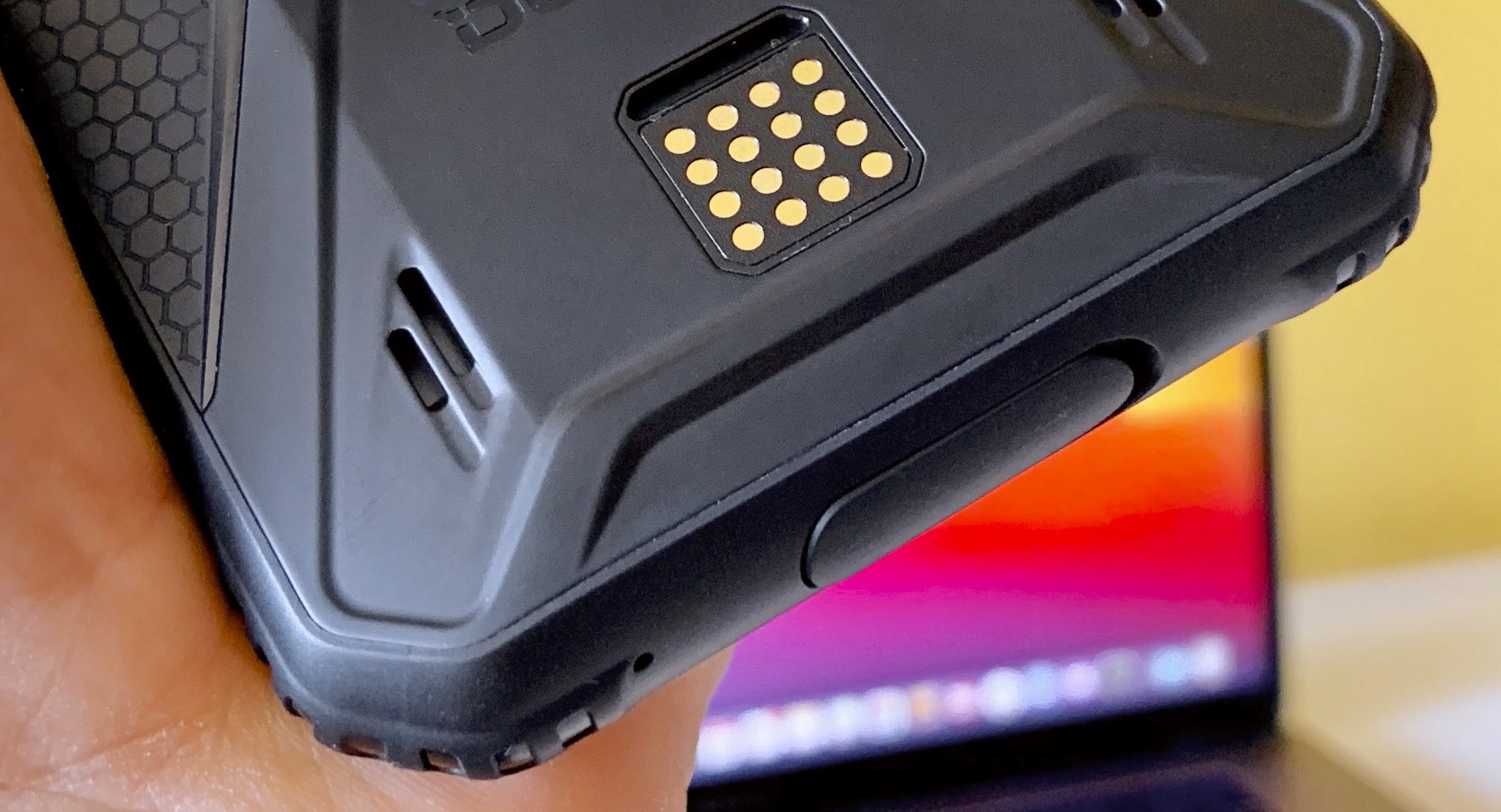
The POGO connector on the back for snap-on attachments
Some specific software features are provided on top of pure Android that are commonly found in other ruggedized smartphones. These include a handy SOS feature, another software feature called DuraSpeed which limits background apps, MediaTek’s standard utilities and more.
Conclusion: a great value for money
As an iPhone user accustomed to premium pricing and regular updates, my biggest disappointment with the S95 Pro is the fact that it isn’t upgradeable to Android 10. It’s a shame, really, especially considering its hardware capabilities and the fact that it released in November 2019. On the other hand, that’s how the Android world rolls so it’s not entirely unexpected.
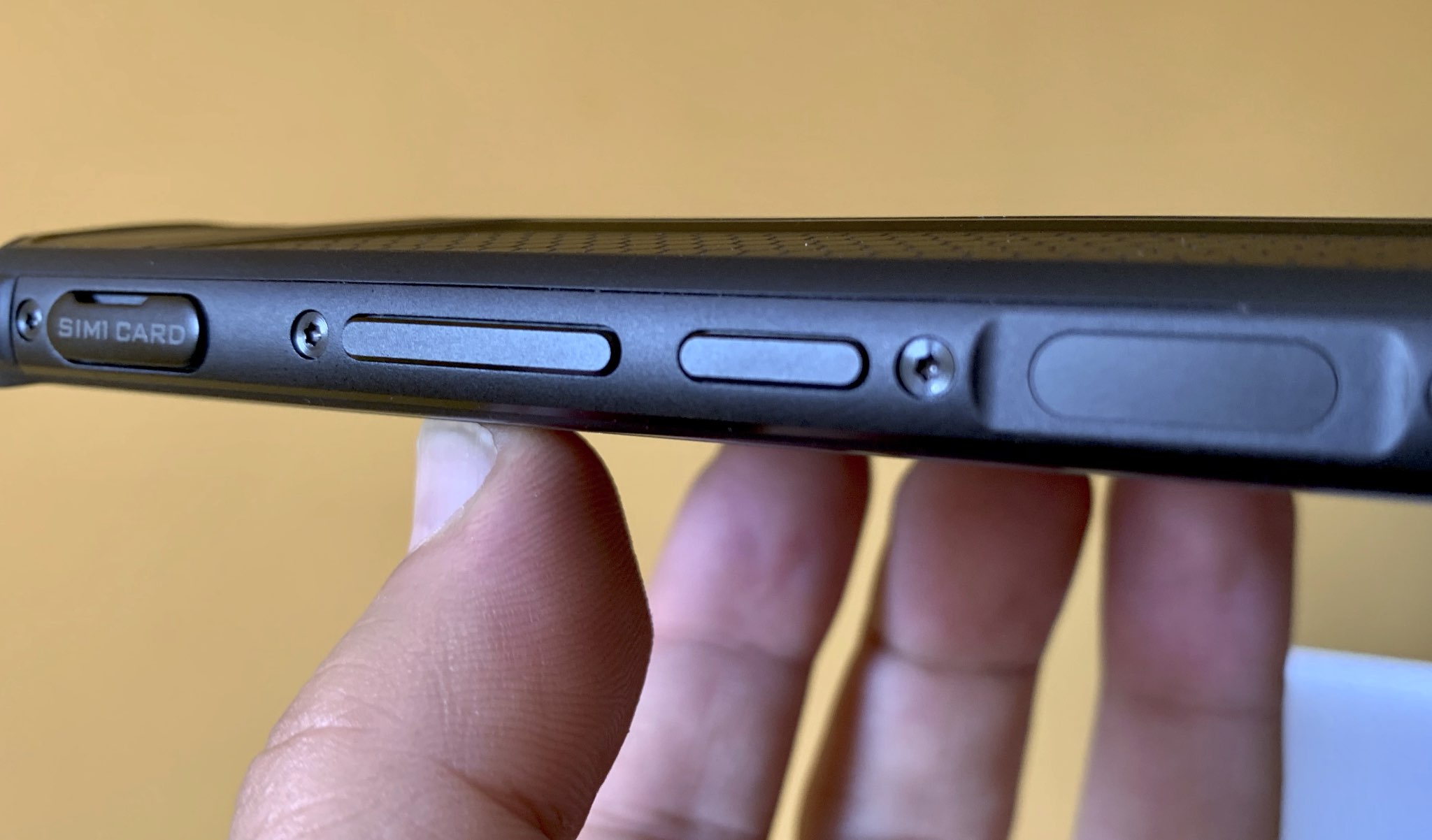
Left to right: the SIM tray 1, volume rocker, power button and fingerprint sensor
Some people may have issues hearing the caller properly due to the speaker being embedded in the top bezel right above the display (Doogee is hardly the only Android maker with speaker placement issues), which can be circumvented by using headphones or making an effort to find that sweet spot when pressing the phone against your ear.
I didn’t like that the POGO connector wouldn’t keep an add-on firmly attached to the back of the phone. Even a slight side kick is enough to send your add-on flying across the room, which could possibly end in tears because the attachments aren’t strengthened like the phone itself.
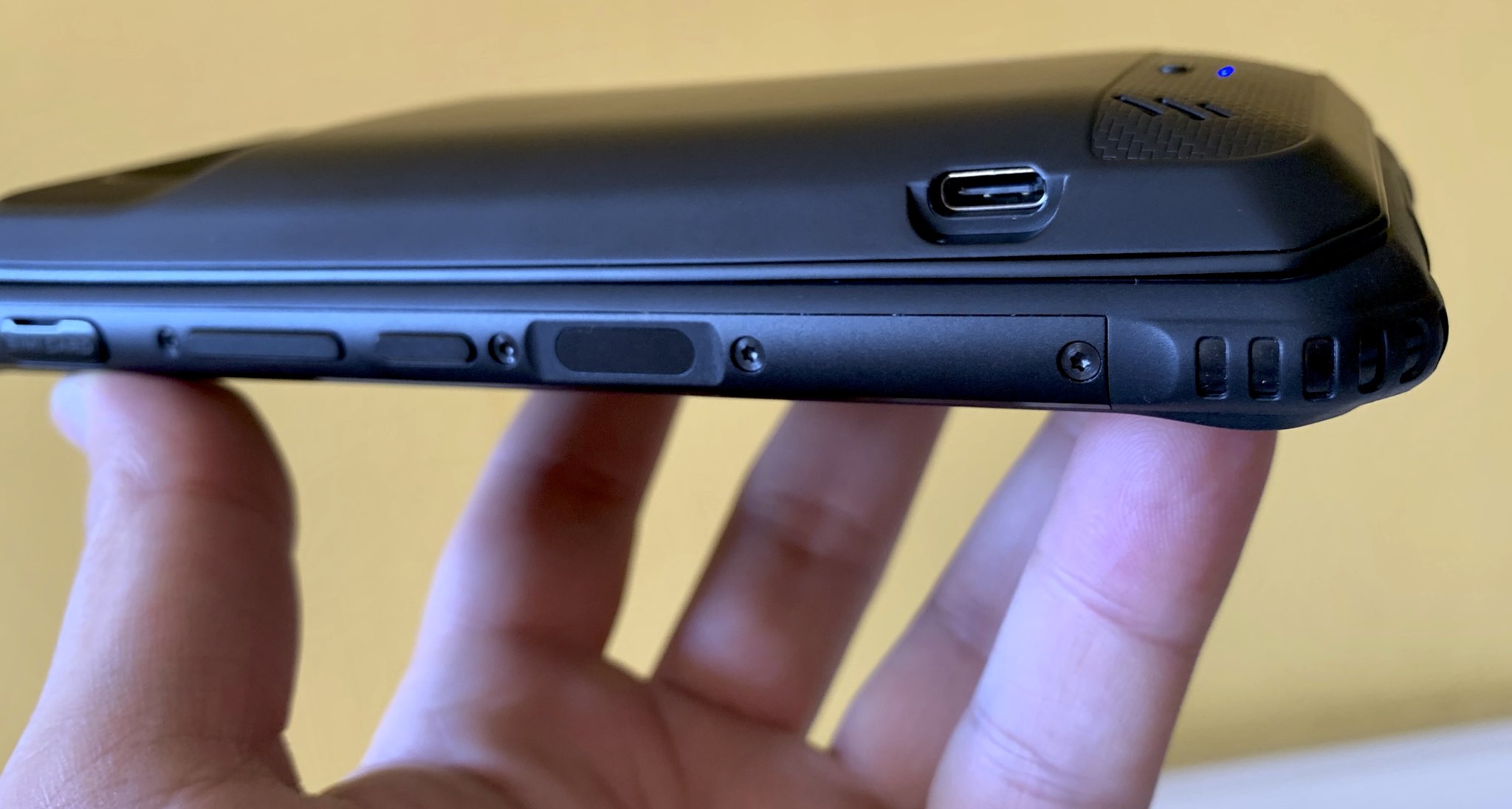
The side view of the battery add-on – that’s quite a hump
Rounding up my list of objections, I wanted the external accessories to work on other smartphones, too. It’s a shame they don’t because adding Bluetooth to the speaker attachment and wireless charging support to the battery pack could’ve solved that in one fell swoop.
Other than those quirks, the S95 Pro is a surprisingly capable and speedy device that has solidified Doogee’s credentials in the rugged smartphone space further. Its industrial design is one of the best-looking for a rugged smartphone, at least in my personal opinion. And thanks to its durable design, you can easily add features by attaching a battery or speaker module.
And above all, the S95 Pro is very affordable at less than $400 a pop, especially if you’re an iPhone user who wants to see what life is like on the Dark Side and are in the market for a very capable Android smartphone which won’t break the bank.
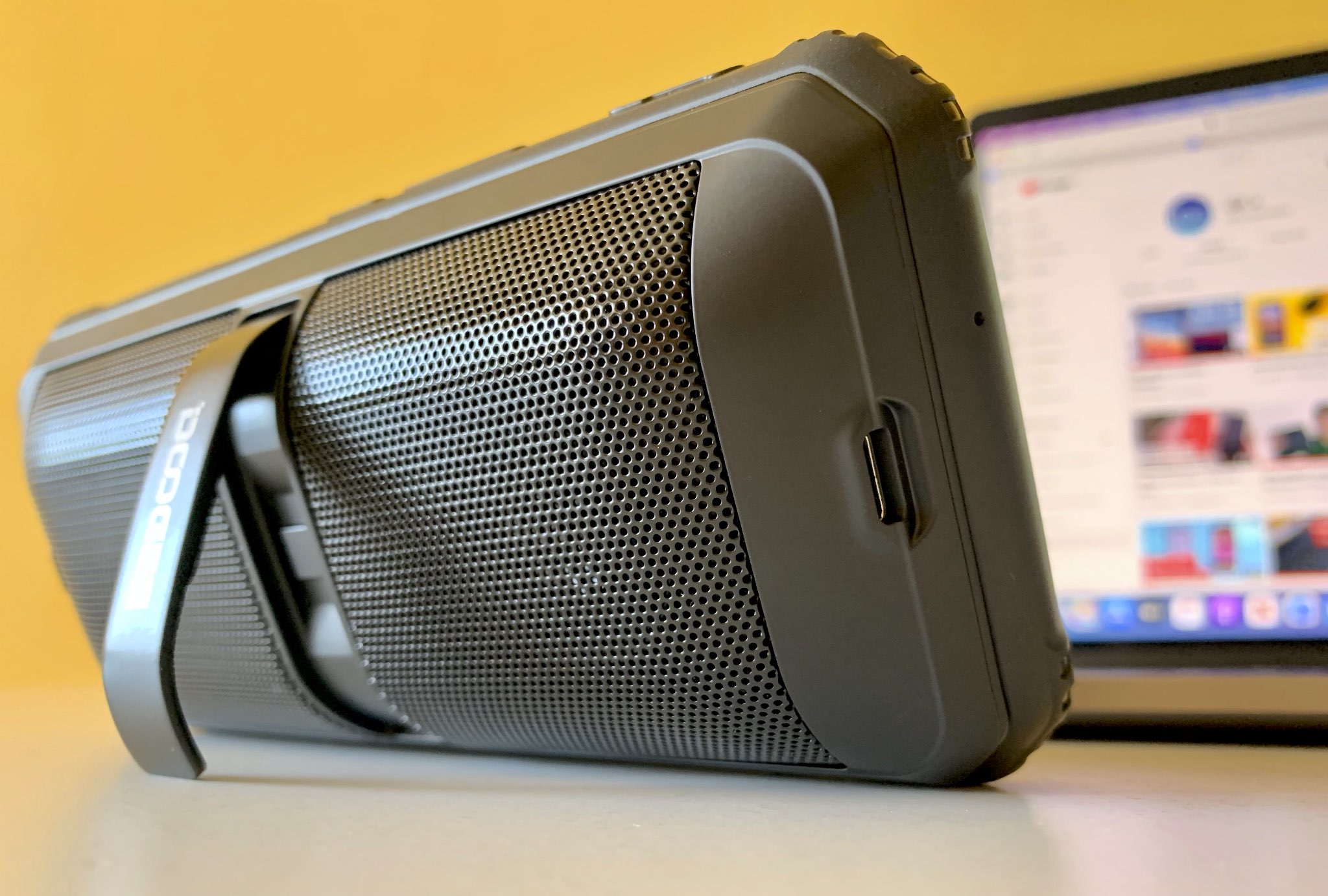
A kickstand built into the speaker add-on is a thoughtful addition
And above all, the S95 Pro is very affordable at just $400 a pop, especially if you’re an iPhone user who wants to see what life is like on the Other Side and are in the market for a very capable Android device that won’t break the bank.
Just because the Doogee is ruggedized does mean it’s only ideal for construction workers and people who enjoy outdoor activities — it proved a versatile device for anything from taking photos and playing games to keeping up with social media and staying productive on the go.
Source link: https://www.idownloadblog.com/2020/07/13/doogee-s95-pro-review/



Leave a Reply